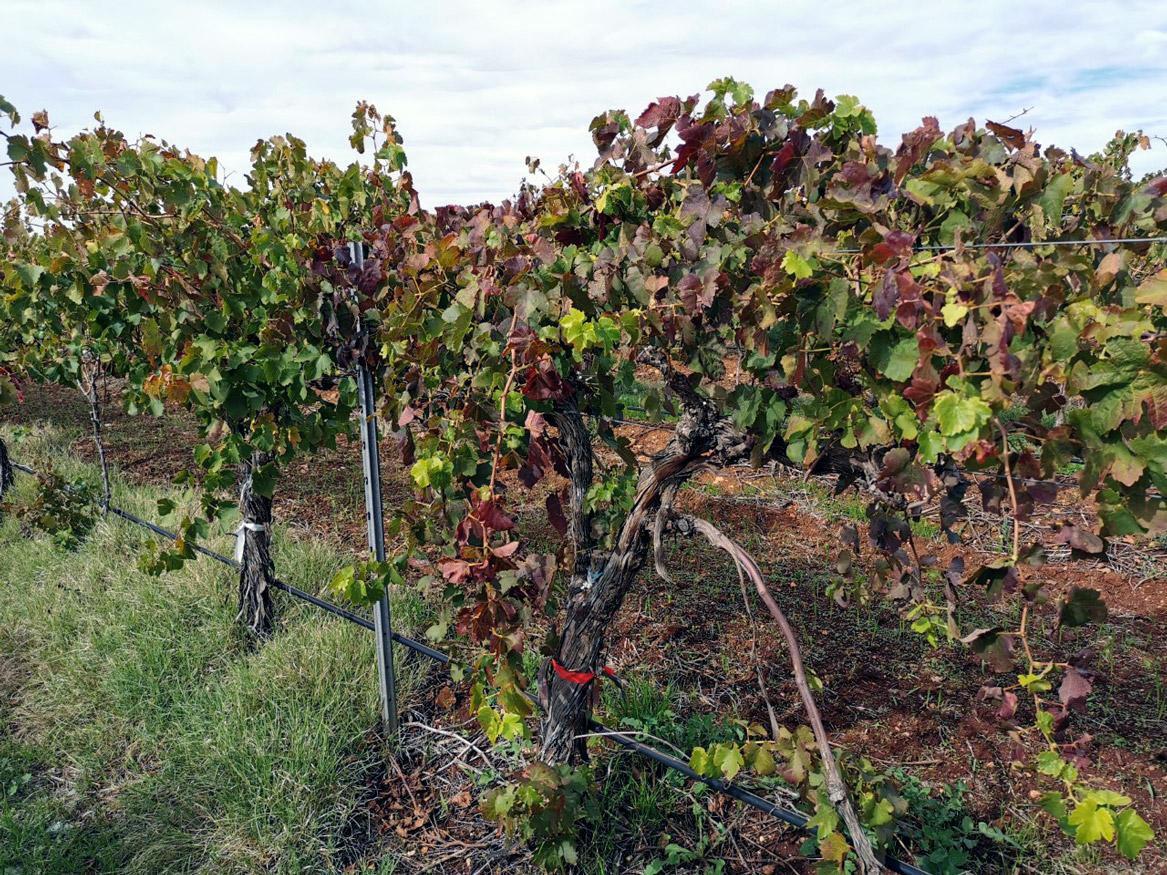Battleground of the grapevine: Shiraz Disease under the microscope

Grapevine diseases have increased at an alarming rate in South Australia with the recent extreme drought and heatwave events.
We're seeking a student to join us to help uncover new information about disease progression and cultivar-specific grapevine defence responses, through the use of cutting edge technologies in molecular biology and microscopy.
Shiraz disease (SD) is a highly destructive disease in Australia and South Africa, and certain red-berried grapevine cultivars such as Shiraz, Merlot and Malbec are highly susceptible to SD.
Symptoms associated with the disease include retarded shoot growth, primary bud necrosis, delayed senescence of crimson-coloured leaves, significant yield loss and vine mortality.
Phloem-limited viruses such as grapevine virus A (GVA) and grapevine leafroll-associated virus 3 (GLRaV-3) are the primary causal agents of the SD. Even though GVA and GLRaV-3 infections have also been reported in white berried cultivars, infected vines appear asymptomatic and do not show retarded vine performances.
So far, virtually no studies have been conducted in Australian vineyards to understand if differences in symptomology between different grapevine cultivars are attributed to differences in virus titre levels, virus-mediated internal tissue damages and/or plant defence responses.

Growers have claimed that grapevine diseases have increased at an alarming rate in South Australia with the recent extreme drought and heatwave events. Therefore, it is now timely that virus-host interactions be investigated in more detail.
Previous studies in other crops have indicated that phloem-limited viruses could potentially induce tumours in the veins and modify the cellular arrangements of sieve elements for the rapid distribution of viral particles throughout the plant. However, a comprehensive view of how SD-associated viruses induce structural anatomical changes is largely unknown.
Therefore, this project focuses on discovering the link between SD-associated virus titre levels and vasculature changes in different grapevine cultivars. The fundamental insights gain through this study will help us understand disease progression and cultivar-specific defence responses. The research will include cutting edge technologies in molecular biology and microscopy.
In this honours project, you will develop skills in:
- RNA extraction, PCR, gene expression analysis by real-time qPCR
- Histological techniques such as tissue embedding and staining
- Light and electron microscopy
- Image processing and statistical data analysis

Supervisors
- Dr Dilrukshi Nagahatenna
- Co-supervisor: Dr Vinay Pagay
- Research area: School of Agriculture, Food and Wine - Department of Plant Science, Grapevine Molecular Physiology Group
- Recommended honours enrolment: Honours in Plant Science or Honours in Viticulture
